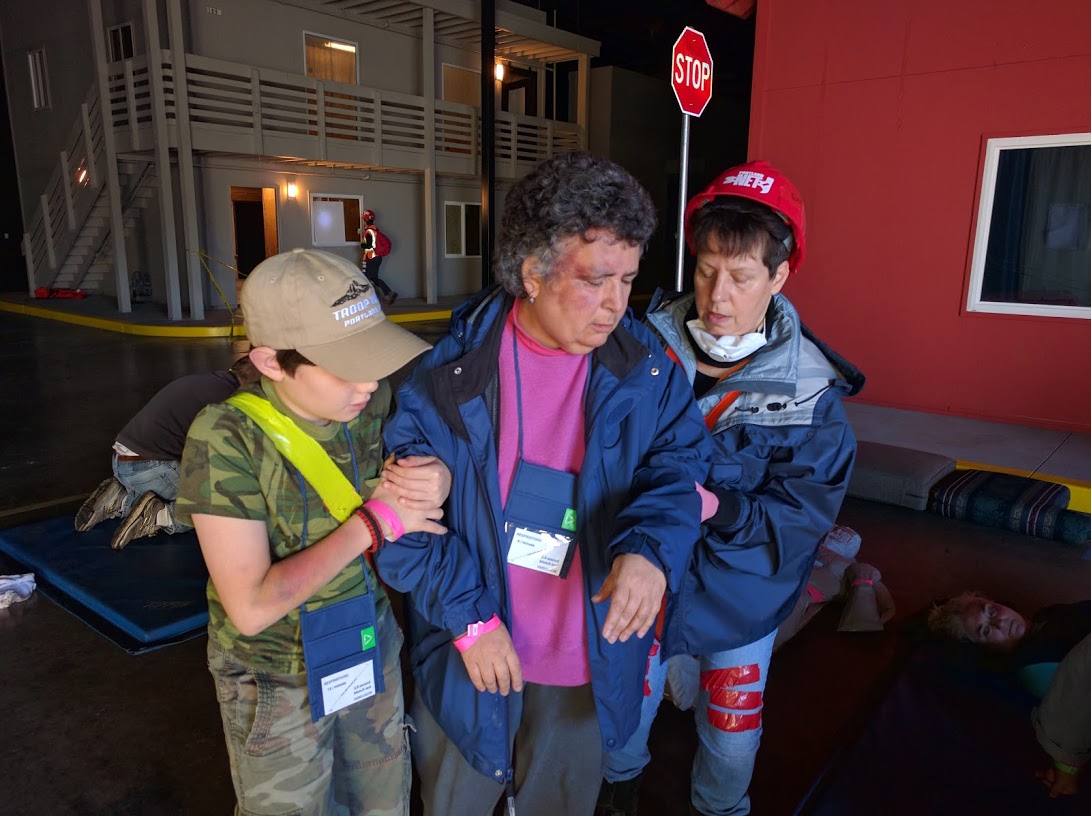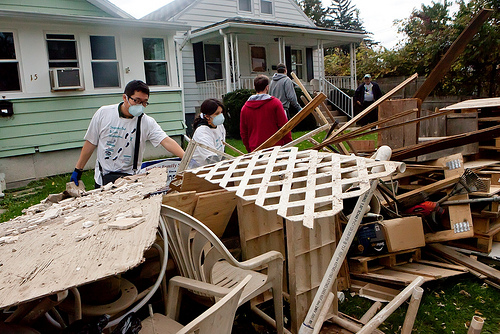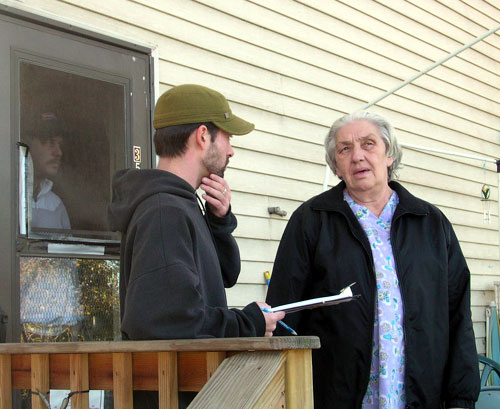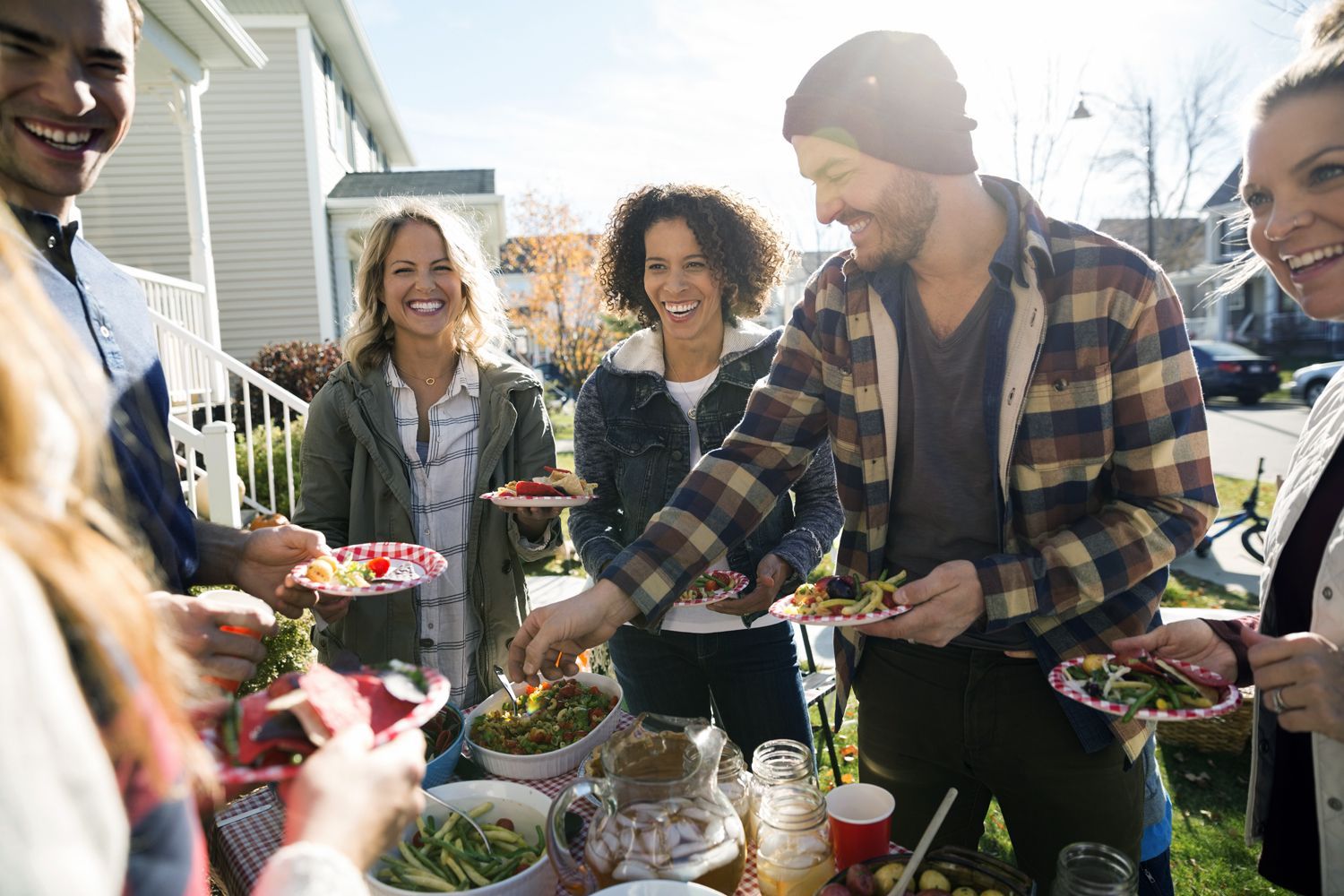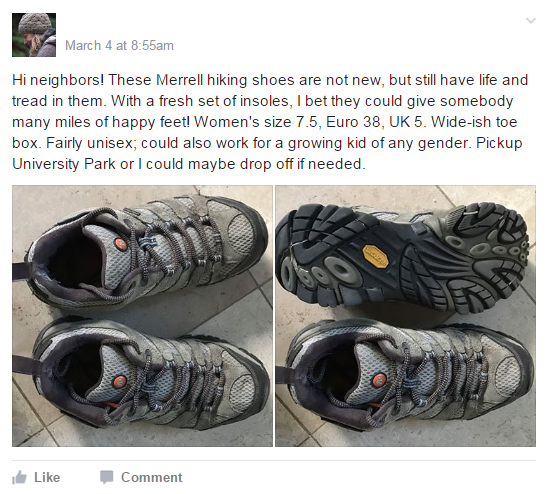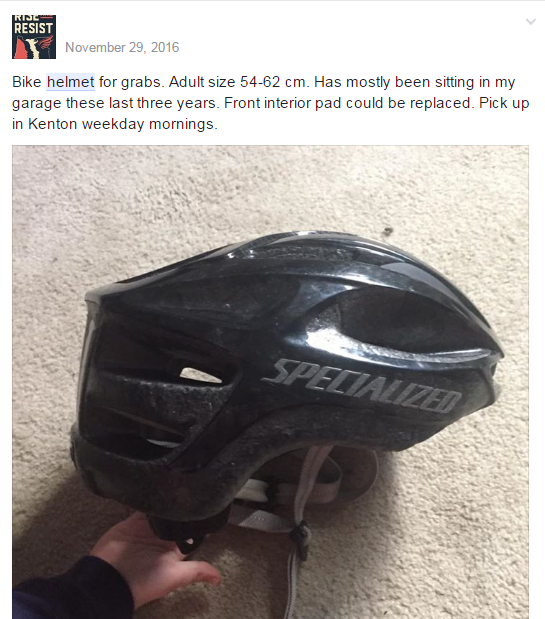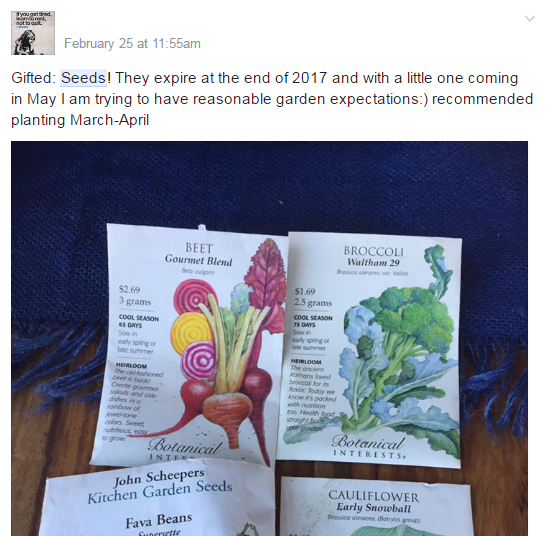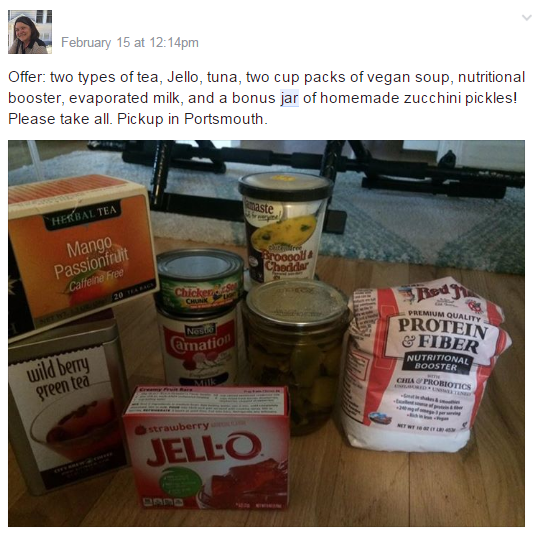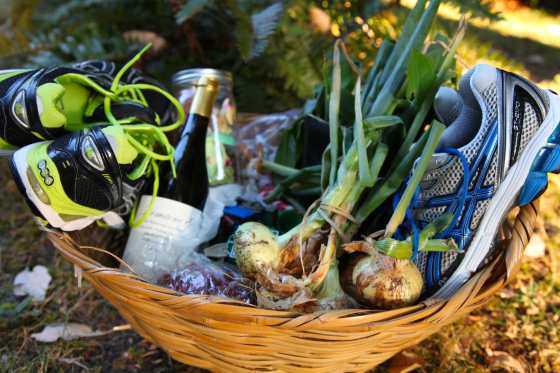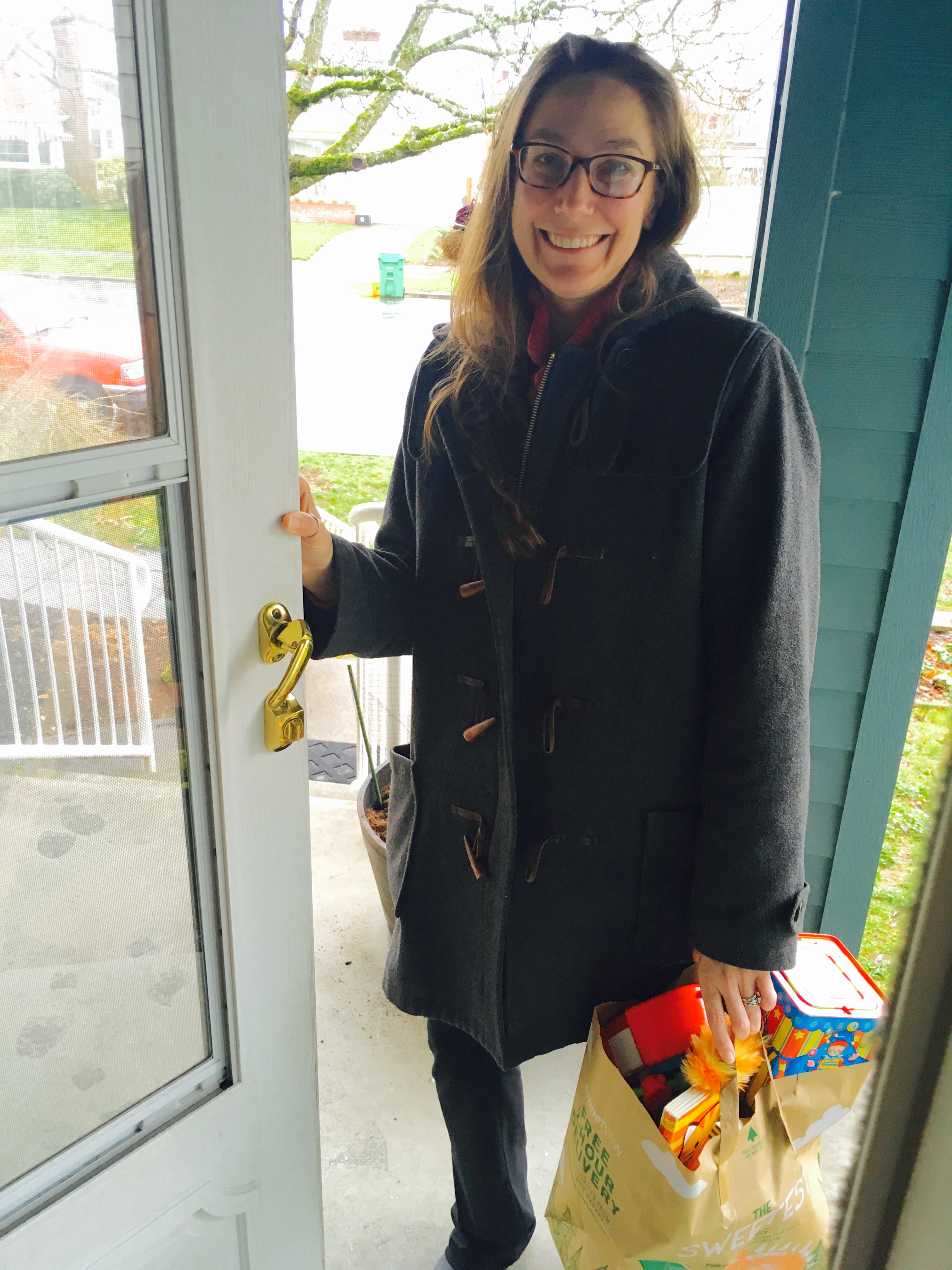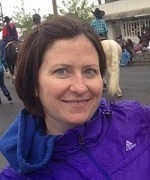In the past week, three things happened that will enrich my daily life (and may come in handy after a disaster): I met a neighbor three blocks away who has kids the same age as mine, I got a free pea trellis, and I learned how to make fire cider – all thanks to a group I joined a year ago – the Buy Nothing Project. It has brought me into contact with people near me whom I would likely not have met otherwise.
How Does It Work? Buy Nothing provides a structure for groups of neighbors to give or lend items they no longer need and ask for items they would like to receive or borrow. They can also give/receive services and gifts of time. Interactions begin on Facebook and continue on front porches and in living rooms. Ongoing relationships often result, and amazing acts of kindness abound.
WHAT DOES THIS HAVE TO DO WITH DISASTERS?
The four phases of emergency management are: mitigation, preparedness, response, recovery. Most disaster resources (including this blog!) focus primarily on things you can do by yourself that fall into the categories of mitigation and preparedness (like making an earthquake kit, making reunification plans, strapping your furniture, bolting your foundation, learning to shut off your utilities, and storing water).
But response and recovery are no less important, and planning for them means getting out and interacting with your neighbors. After the shaking stops, it’s our neighbors who will be there to physically and emotionally save us. After the dust settles, it’s our neighbors who will help us recover and rebuild. There just aren’t enough professional responders to “come save us.”
Living in a busy city in modern times often makes introductions and connections challenging. So how can we connect with our neighbors? Buy Nothing is one tool you may want to consider.
FACE-TO-FACE INTERACTIONS
In this semi-online, semi-offline community, true wealth is considered to be the web of relationships created between neighbors. The group encourages face-to-face interactions, and members often share stories with the group about the way those interactions have brightened their day.
Many members become friends on Facebook and in real life. Buy Nothing events have sprung up in my neighborhood. Last weekend there was a clothing swap, and the weekend before that there was a silent auction-style gift exchange with ice-breaker games and snacks. This spring there will be a Buy Nothing booth at our neighborhood cleanup event.
I often run into Buy Nothingers when I’m out in public. Sometimes I’ve met them in person, and sometimes I recognize their photo and introduce myself. I’ve only lived in this neighborhood for two years, but I already feel infinitely more connected than I did after several years of living in my former neighborhood.
SCARCITY AND ABUNDANCE
Buy Nothing creates a hyper-local gift economy. No money is exchanged at any point. Group administrators are volunteers, and they remind us that giving should not just be “haves” giving to “have-nots.” Everyone has something of value to share, and it’s amazing to see this in action. A group member who yesterday asked for toilet paper is today offering a bike he no longer needs. This highlights our community’s scarcity and abundance all at once.
While our resilience can be affected by our economic status, a strong community can mitigate the impact. I’ve seen Buy Nothing act as a community food bank and a way to keep ever-growing children clothed. And as we know, preparing earthquake kits can be challenging for community members who don’t have resources to spare. Through Buy Nothing I’ve been gifted bike helmets, water containers, backpacks, medical supplies, canning supplies, seeds, hiking boots, work gloves, and cabinet latches. I’ve seen others give and receive space blankets, canned goods, storage containers, propane fuel, tarps, buckets, flashlights, and tents.
COMMUNITY RESILIENCE IN ACTION
During our recent snow storm, one member offered free childcare to parents who couldn’t take any more time off work. Another offered transportation to those who wanted to avoid mass transit delays and/or didn’t have a vehicle with snow chains. Sidewalks were shoveled, salt was sprinkled, food was delivered, sleds were gifted, and stir-craziness was abated.
–> Last month a new mom got her bike and work bag stolen. Group members gifted her new bike panniers and a breast pump.
–> A few weeks ago, a group member gave birth to premature twins, and Buy Nothingers offered to run errands, give her postpartum items, provide emotional support, and set up a meal train for the family.
–> Last week a member asked for a ride to her citizenship test, and offers of rides, support, and encouragement rolled in.
–> Yesterday two Buy Nothingers helped another member with mobility issues by sweeping the pine needles off her roof, unclogging her gutters, and washing them out with a gutter cleaner they got from the North Portland Tool Library.
–> Today a member invited others to join him for a mending party as he works through his pile of clothing that needs patching and darning.
SUSTAINABILITY
Declutter, save money, meet your neighbors, get a new lamp shade, save the world! Buy Nothing also has an impact on our environment and cash economy. It keeps usable goods out of landfills, reduces carbon emissions, and reduces our reliance on corporations. And as Buy Nothingers share their skills, they are helping others learn to make and fix instead of toss and buy.
“Rethinking consumption and refusing to buy new in favor of asking for an item from a neighbor may make an impact on the amount of goods manufactured in the first place, which in turn may put a dent in the overproduction of unnecessary goods that end up in our landfills, watersheds, and our seas.” — https://buynothingproject.org/about
LAY OF THE LAND
I’ve noticed a hidden benefit to participating in Buy Nothing: I’m learning the physical layout of my neighborhood. As I drive, bike, and walk to my neighbors’ homes, I’m getting to know the streets and landmarks of my community. I’m sure you can see how this might be useful to a Neighborhood Emergency Team member after an earthquake.
IMMEASURABLE BENEFITS
Buy Nothing has brought me immeasurable benefits. I’ve strengthened my connection to my community, saved gobs of cash, beautified my home, added to my emergency preparedness kits, learned new skills, and felt the joy of giving. A few weeks into it, I couldn’t stop looking for items in my house to give away. A few months into it, I stopped thinking of it as a cool way to get stuff and started seeing as a way to connect with people and unplug from the system. With each passing day, my family is more resilient and therefore more prepared for all stages of a natural, manmade, or personal disaster.
There are currently 80+ Buy Nothing groups in Oregon, including 18 in Portland. As groups grow, they “redistrict” and split apart into even more hyper-local groups. To learn more, visit the Buy Nothing Project website and watch this video.

